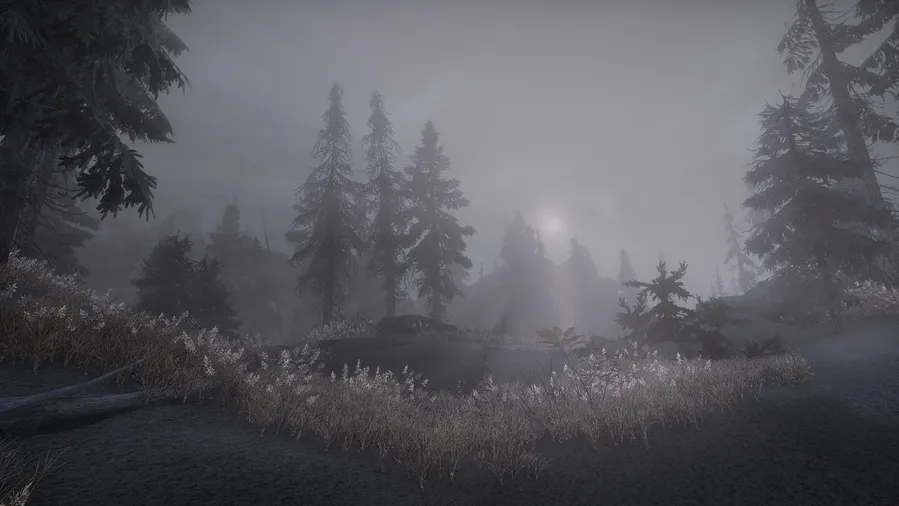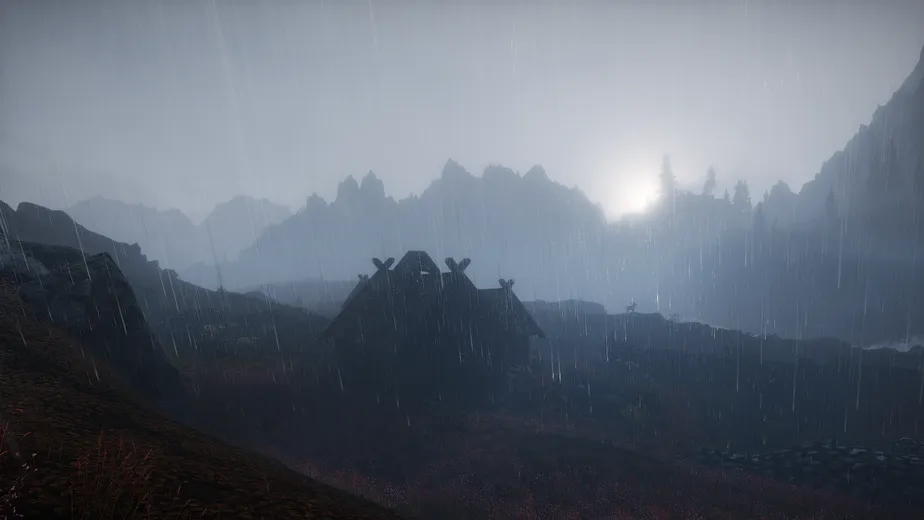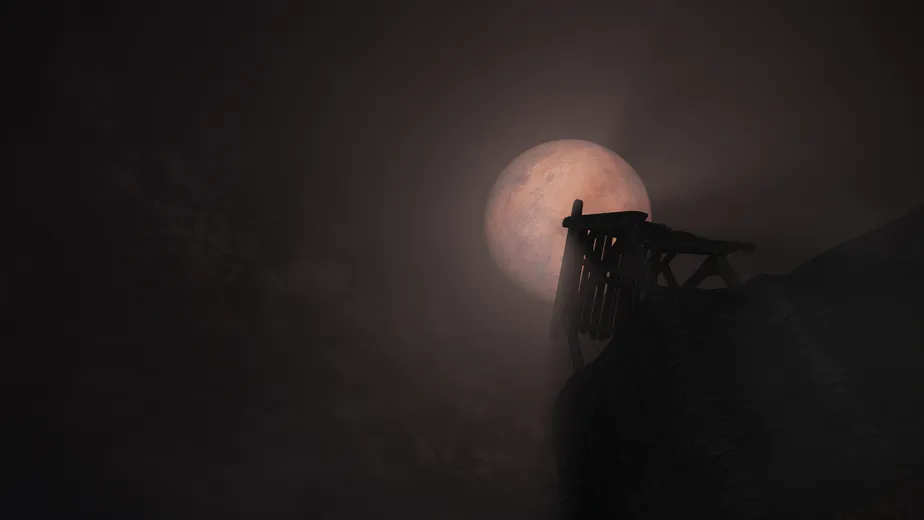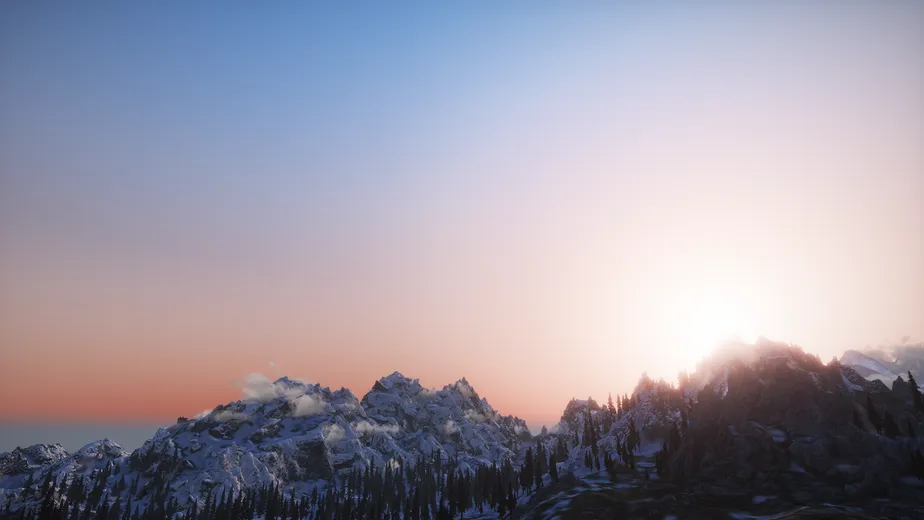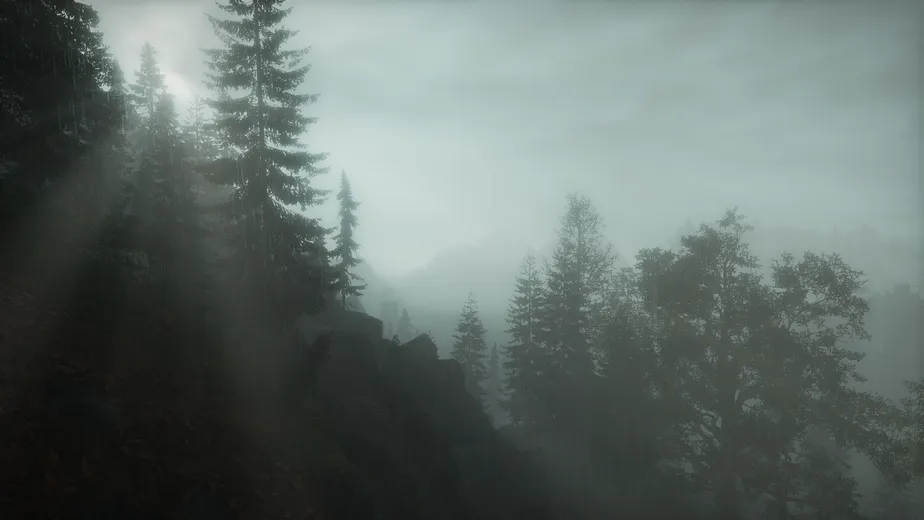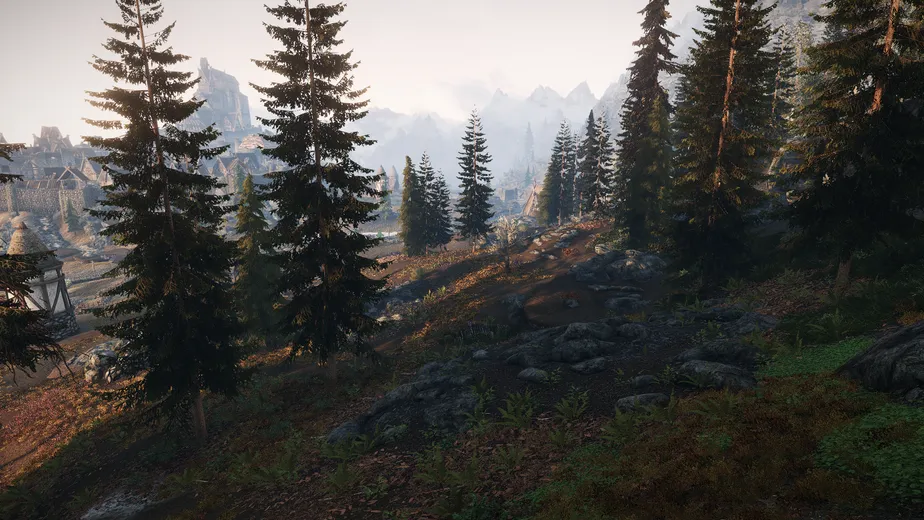Realistic orbital simulation
All movement from the sun to each of the moons and stars has been reworked to be in sync with an underlying orbital simulation.
This results in the sun taking a realistic path through the sky and seasons, including having
correct summer and winter solstices and equinoxes.
Instead of the static, centered (not even spherical) path the sun normally takes.
Moons follow the sun’s path (just like Earth’s) on their own separate orbits and speeds. Their phases are adjusted accordingly and are no longer shared.
Stars got the same treatment and follow the new shared rotation axis as well.
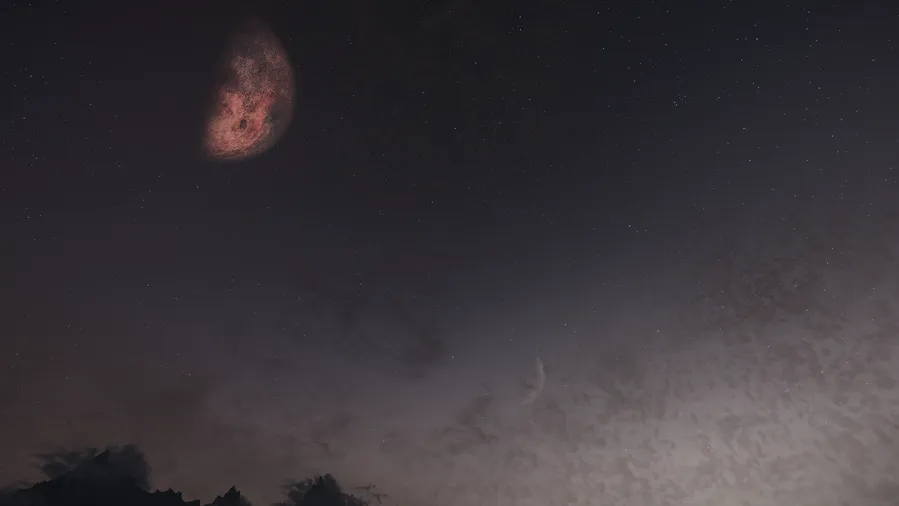
Seasonal daylength variation
Previously static, the length of each day is now derived from the shared simulation. This synchronization allows for varying amounts of sunlight hours depending on the season and configured latitude.
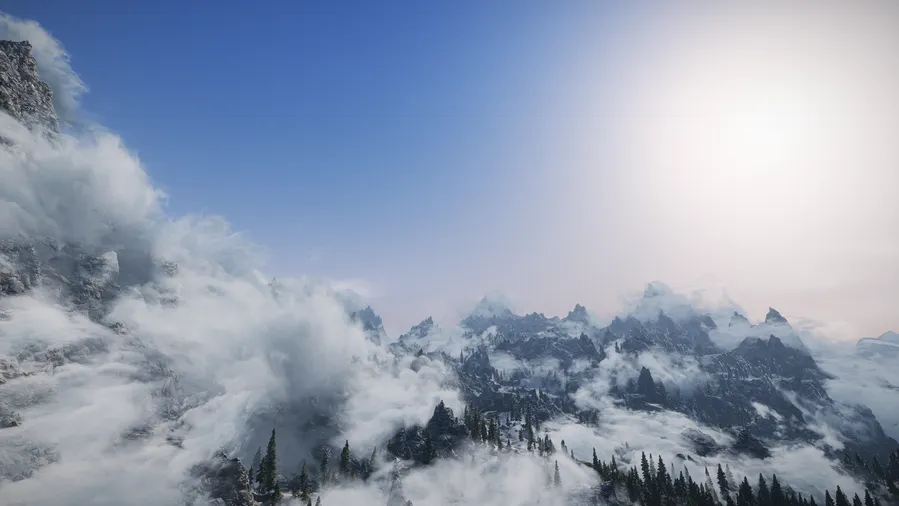
Direct and volumetric lighting that makes sense
Just like its predecessor, both direct and volumetric lighting is now tied to the actual position of the sun - or moons/sky during the night.
The system itself received a full rework and can now dynamically switch between various sources depending on their visibility and intensity and give them their own fitting lighting colors.
Furthermore, the lighting strength of each of the moons will vary with their current phase.
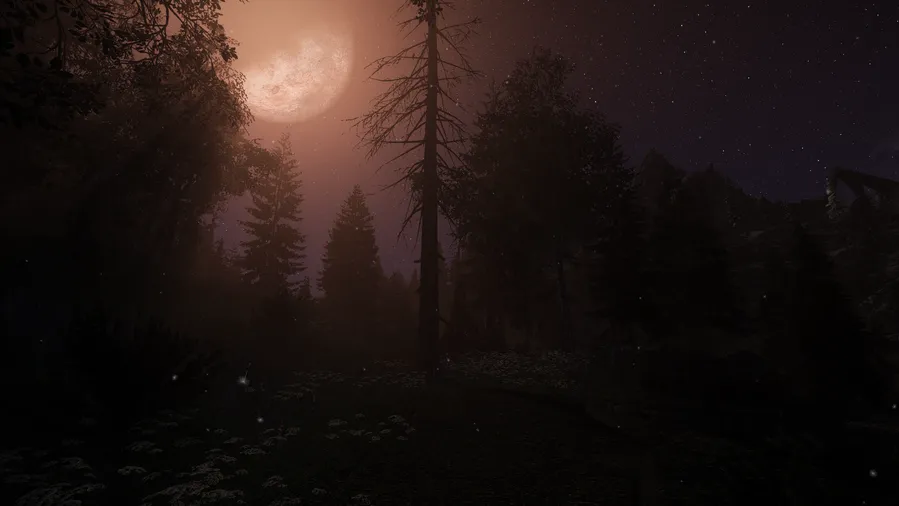
Dynamic Ambient Lighting
An improved version of the DALC fix (Direction Ambient Lighting Colors fix) previously only available through KreatE presets has been included as well.
This new dynamic one isn’t just applied to all weathers on the fly, it also reacts to the direction
and intensity of the current direct lighting source, tilting the direction of the ambient
lighting colors towards it.
Giving it much-needed flexibility independant from times of day or weather.
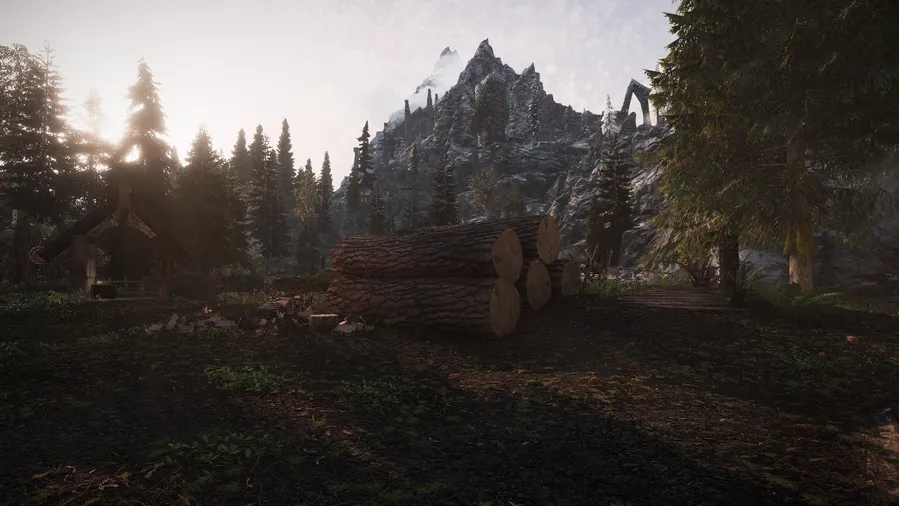
Well-documented, powerful configuration
AELAS, while featuring a sensible default configuration that should fit most people, allows for extensive customizations. You can not only tweak the orbital simulation’s inputs but also the intensity of various light sources depending on climate, weather or even moon phase.
Look into the documentation to get started.
